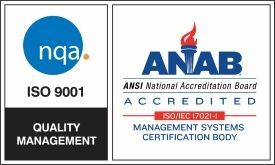Industrial knives and blades may look alike even if they’re made from different materials. When choosing blade materials, it’s important to consider more than price, including how it will be used, cutting performance, slit quality and wear resistance. In addition to hard steel, industrial blades can be made from carbide, ceramic, stainless steel and powdered metal or tool steel.
Tungsten carbide blades are long-lasting
Tungsten carbide is a composite material made of tungsten and carbon, which is sintered under high pressure and temperature to create a hard, dense material. This makes them more resistant to wear, deformation and damage. Tungsten carbide blades and knives can maintain their sharpness and cutting performance for longer periods of time, which reduces downtime and maintenance costs. They are commonly used in cutting and slicing applications, such as in the paper, textile and food processing industries.
Tungsten carbide blades are more brittle and prone to chipping and cracking than steel knives. Valley Grinding tungsten carbide (and ceramic) blades are made up of a special composition to provide exceptionally thin blades that are highly resistant to breakage. 52100 tungsten carbide razor blades feature the sharpest cutting edges, resist nicking and can last hundreds of times longer than regular steel blades. While tungsten carbide can be more expensive than other materials, it’s usually worth the investment because of its long service life and improved performance.
Ceramic razor blades stay sharper longer
Ceramic razor blades boast sharper blades that stay sharper for extended periods compared to steel blades. The smoother surface of ceramic blades provides superior lubricity and reduces friction up to 24%, making them ideal for film converting or other adhesive applications. Ceramic blades can be beneficial for other industries, including those that must cut cardboard, rubber, plastic straps, tape, bagged goods, foil, yarn and more.
Ceramics are more brittle than carbides, which can lead to excessive and premature chipping of the cutting edge. As mentioned above, Valley Grinding ceramic (and tungsten carbide) blades are made up of a special composition to provide exceptionally thin blades that are highly resistant to breakage. Although ceramic blades are a little more expensive than regular steel, they last 10-12 times longer. They’re also easier to maintain because they don’t rust or need oil to prevent rusting.
Stainless steel blades resist rust and corrosion
Like ceramic, stainless steel blades are known for their resistance to rust and corrosion. Because they can tolerate contact with food and water, they are mostly used for food processing and food packaging. Stainless steel blades are hard and resistant to wear and tear. Although stainless steel blades lose their edge quicker than other metal materials, they are easier to sharpen.
Powdered metal and tool steel blades are made of custom components
Like the name suggests, powdered metals start as powder, which allows for customization of materials used and resulting specifications, including increased wear resistance, cleaner finishes, improved grindability and greater toughness for less chipping. Tool steel metal is also composed of various metals that are usually heated to create a hard material that is wear- and heat-resistant. Powdered metal and tool steel blades are used for a lot of industries except food. Within each type of material, there are several variations as noted below.
| Material | Pros | Cons |
|---|---|---|
| Tungsten carbide | Maintains hardness but with elasticity; best choice when considering run time and cost | Not as effective at very high temperatures |
| Ceramic | Maintains hardness and wear at very high temperatures | Shorter run times and wear |
| Stainless steel | High-resistance to rust and corrosion | Loses its edge quicker than other metal materials, but is easy to sharpen due to its tougher, but softer properties |
| Powdered metal & tool steel | Increased wear resistance and greater toughness for extreme uses like specialty manufacturing processes | Higher cost |
Specific grades of powdered metal and tool steel blades
- D2 (The “d” stands for die) tool steel has high-carbon and high-chromium properties, which gives it wear and abrasion resistance. D2 is sometimes called “semi-stainless steel” because it falls just short of the amount of chromium (11%-13%) needed to make stainless steel. The high hardness gives it a long-lasting edge but D2 blades can be difficult to sharpen and have lower toughness.
- 52100 tool steel is a high carbon steel alloyed with chromium. It has excellent wear resistance and edge retention and can be sharpened to extend its life. 52100 tool steel is often used for cutting paper, foil, film and non-woven products.
- High speed steel blades work well in situations like manufacturing processes that require a production or packaging line to be in constant use. The high speed blades can work continuously and withstand heat because of the tungsten and vanadium elements.
- A11 tool steel provides extremely high wear-resistance in combination with relatively high impact toughness because it contains a large amount of vanadium carbides. A11 offers better wear-resistance than die steels such as D2 (described above). It’s also easy to grind and more cost-effective.
- CPM 10V tool steel is a powdered metal steel that also provides extremely high wear resistance with relatively high impact toughness because of vanadium carbides. Like A11, CPM 10V offers substantially better wear resistance than die steel like D2.
Contact us if you need help choosing blade materials
No two cutting applications are the same. The needs of your operation depend upon how your knives and blades are being used and your production and budgetary requirements. The experts at Valley Grinding are happy to help with all your slitting needs, including selecting blade materials. If you know the part number that you're looking for, you can buy easily at our online store or for immediate assistance, please call (800) 950-7675.

